Objective : The purpose of this study is to propose an evidence-based resting time for proper blood pressure measurement after usual daily activities such as walking.
Background : Blood pressure is one of indices to show healthy status. It is required to be measured and evaluated accurately. Usually it is considered to let a person take a rest at first as one of procedures to measure blood pressure accurately. However, explanations and definitions for “rest” described in textbooks or nursing literatures are various, and there is not any universal definition. Major differences among definitions are “the length of time” that required for rest. There was not the precedence study that shows any evidence for proper procedures.
Sample : The subjects were 23 healthy adolescents with ages of twenties.
Conceptual framework and outcome variables : Physiologic homeostasis must stabilize blood pressures within some degree of range even after exercises. Systolic and diastolic blood pressures are outcome variables for confirming stabilized hemodynamic status.
Method : The subjects undertook an exercise, walking at 4.2 kilometers per an hour for eight minutes using a walking machine. Blood pressures were measured in a sitting position for 20 minutes after walking. An automated continuous blood pressure measurementmonitor (Jentow-7700, Nihon Colin, Japan) was used to measure blood pressures at each heartbeat. The subjects put their right arm in a manchette and pressure sensors on their left radial arteries. Continuous blood pressures were recorded confirming reliability of the measurement.
Findings : In some subjects the blood pressures changed by small width after their blood pressures were decreased, in other subjects the rest time can' t be determined because comparatively remarkable changes of blood pressures continued even after their blood pressures were decreased. In 8 subjects, the point that descending blood pressures stabilized could be determined within 5 minutes, in 17 subjects, the point could be decided within 10 minutes and in 20 subjects, it could be determined within 15 minutes. However in one subject, it could be determined at 16 minutes 10 seconds.
Conclusions : Followed a certain textbook recommending resting more than 20 minutes must be necessary for blood pressure measurement, blood pressure can be measured accurately. However, followed other textbooks indicating a necessary resting time for blood pressure measurement is more than 5 or 10 minutes, the measurement accuracy is not adaptable to all subjects.
Implications : This study showed the rest time that used to be set up without evidence did not have necessarily validity for accurate blood pressure measurement. The recommending resting time after light physical activities such as walking that derived from this study is 20 minutes, which must guarantee proper blood pressure measurements for relatively health people in daily settings.
View full abstract
